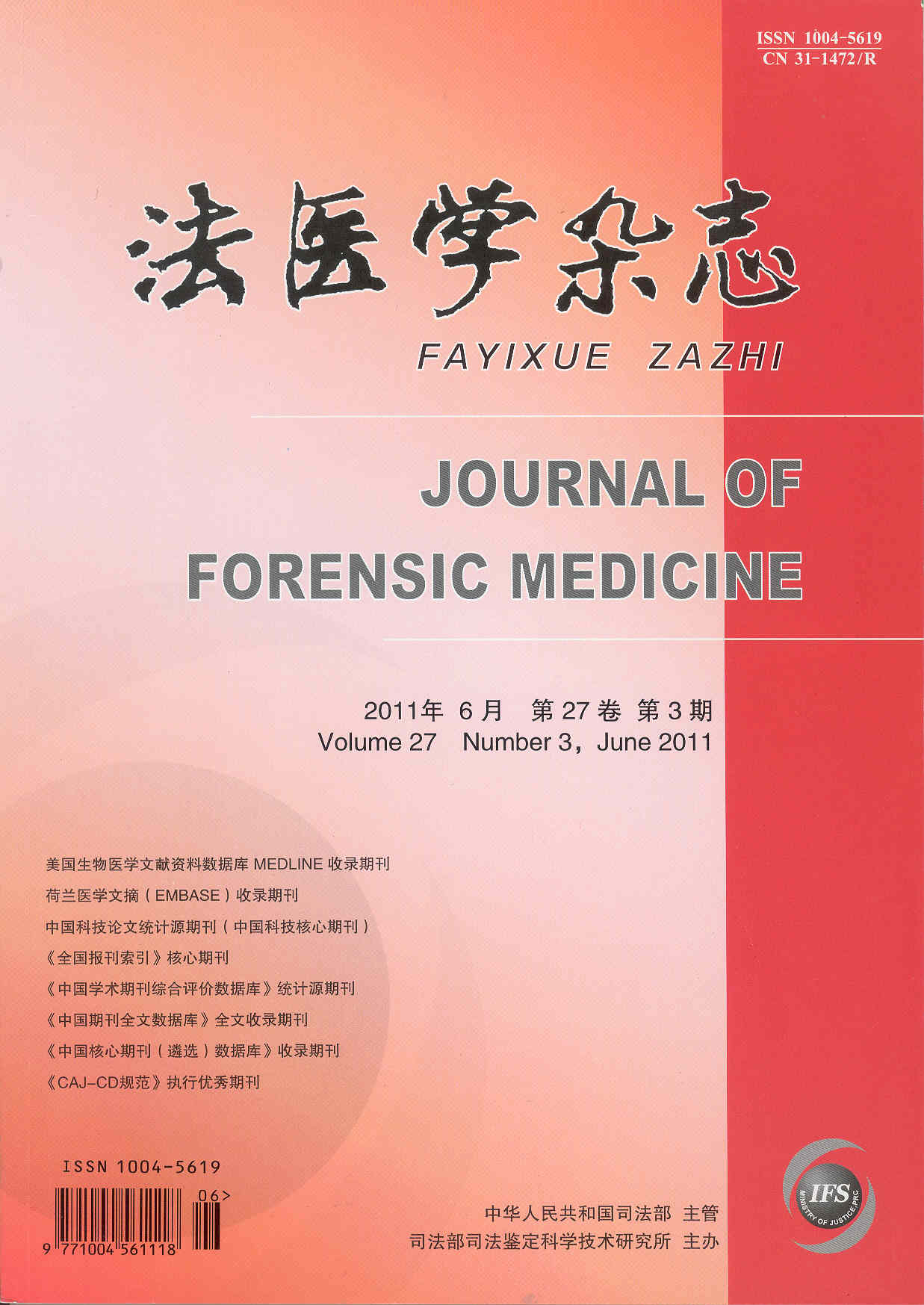|
|
Application of Number of Matched STR Loci and Identical Alleles in Individual Discrimination of Colorectal Cancer
ZHAO SHU-MIN;LI CHENG-TAO;ZHANG SU-HUA;LI LI (. SHANGHAI KEY LABORATORY OF FORENSIC MEDICINE;INSTITUTE OF FORENSIC SCIENCE;MINISTRY OF JUSTICE;P.R.CHINA;SHANGHAI 000;CHINA;. SCHOOL OF LIFE SCIENCES;FUDAN UNIVERSITY;SHANGHAI 00;
2009, 0(6):
412-416+.
Objective To establish a feasible algorithm for individual identification of colorectal cancer tissue by investigating its STR mutation. Methods Fifty pairs of fresh colorectal cancer and homologous normal tissues(CR-N group) were genotyped with Identifiler Kit and the mutations generated in cancer tissues were determined. The mutation rates, the numbers of locus matched without identical allele(A0), 1 identical allele(A1), or 2 identical alleles(A2) and the number of total identical alleles(IAn) were calculated. Frequency distributions of A0, A1, A2 and IAn were compared among CR-N group, unrelated individual pairs(UI group) and full sibling pairs(FS group). Discrimination functions were established for individual identification from tumor tissues with discriminatory analysis. Results The frequency of STR genotypic alteration(STRGA) was 3.33% in the 50 colorectal cancer samples. A1, A2 and IAn were fitted to skew distribution in CR-N group, which were significantly different from those in UI or FS group. Based on IAn and A1/A2, discrimination functions were established and validated with an error rate as low as 0.00% for indi- vidual identification from colorectal cancer tissue. Conclusion Discrimination functions established in this study could be a feasible method for individual identification of colorectal cancer samples, which usually have a high frequency of STRGA.
Related Articles |
Metrics
|


